Oxidation Behavior of the Monolayered La2Zr2O7, Composite La2Zr2O7 + 8YSZ, and Double-Ceramic Layered La2Zr2O7/La2Zr2O7 + 8YSZ/8YSZ Thermal Barrier Coatings
Abstract
1. Introduction
- Degradation processes at the interface of the ceramic layer/TGO zone (8YSZ/Al2O3 or/and Ln2Zr2O7/Al2O3 for monolayered 8YSZ and Ln2Zr2O7 coatings, Ln2Zr2O7/8YSZDCL TBC‘ systems and composite Ln2Zr2O7 + 8YSZcoatings) related to oxidation;
- Interphase thermo-chemical stability between main components in composite systems, such as Ln2Zr2O7 + 8YSZ TBC, under conditions of oxidation and hot corrosion with assistance of liquid deposits; and
- Degradation of the top-coat insulation layer under the conditions of contact with corrosive environments such as liquid deposits of sulfate salts, vanadium oxides, or CMAS (deposits/8YSZ or/and deposits/Ln2Zr2O7 for monolayered 8YSZ and Ln2Zr2O7, Ln2Zr2O7/8YSZDCL and composite Ln2Zr2O7 + 8YSZcoatings) typical for hot corrosion processes.
- An optimal value of thermal conductivity (presented in other publications [15]);
- High oxidation resistance (TGO zone morphology); and
- The microstructural characterization of the composite La2Zr2O7 + 8YSZ TBC system as a new solution for insulation layers—this new concept of the La2Zr2O7 + 8YSZ composite system was only described in three pieces of literature from 2018 to 2020. In [17,18,19], where the microstructural characterization, and some of the mechanical properties of this TBC system were presented. The investigation presented in the following publication is related to the microstructure (with special attention to the composite coatings‘ pores and cracks morphology descriptions) and the oxidation behavior of the dual phase La2Zr2O7 + 8YSZ system (layered and composite), as well as the phenomena in the TGO zone.
- The characterization of the composite system La2Zr2O7 + 8YSZ from the point of view of the phase stability and mutual interaction between both structural elements, as a very important factor in determining the overall durability of TBC—this element was only presented in Liu‘s team’s publications and was related to composite sinters [19,20,21,22,23], but there is lack of investigation for real TBC systems. In this investigation the mutual inertia in a plasma sprayed La2Zr2O7 + 8YSZ TBC system under high temperature oxidation test was analyzed, with special emphasis to the interface interactions in the area of the spalt-to-spalt boundaries. This zone is very important from the thermo-chemical point of view, and the durability of composite dual-phase TBC systems [18].
2. Experimental Procedure
3. Results and Discussion
4. Summary
5. Conclusions
Author Contributions
Funding
Conflicts of Interest
References
- DeMasi-Marcin, J.T.; Gupta, D.K. Protective coatings in the gas turbine engine. Surf. Coat. Technol. 1994, 68–69, 1–9. [Google Scholar] [CrossRef]
- U.S. Department of Energy. Materials/manufacturing plan for advanced turbine systems program. In Proceedings of the 1995 Thermal Barrier Coating Workshop; Compiled by Brindley, W.J.; DOEJOR Report 2007; NASA Conference Publication 3312 (1995); U.S. Department of Energy: Washington, DC, USA, 1994. [Google Scholar]
- Clarke, D.R.; Phillpot, S.R. Thermal barrier coating materials. Mater. Today 2005, 8, 22–29. [Google Scholar] [CrossRef]
- Bakan, E.; Vaßen, R. Ceramic top coats of plasma-sprayed thermal barrier coatings: Materials, processes, and properties. J. Therm. Spray Technol. 2017, 26, 992–1010. [Google Scholar] [CrossRef]
- Lee, W.Y.; Stinton, D.P.; Berndt, C.C.; Erdogan, F.; Lee, Y.D.; Mutasim, Z. Concept of functionally graded materials for advanced thermal barrier coating applications: A review. J. Am. Ceram. Soc. 1996, 79, 3003–3012. [Google Scholar] [CrossRef]
- Afrasiabi, A.; Saremi, M.; Kobayashi, A. A comparative study on hot corrosion resistance of three types of thermal barrier coatings: YSZ, YSZ + Al2O3 and YSZ/Al2O3. Mater. Sci. Eng. A 2008, 478, 264–269. [Google Scholar] [CrossRef]
- Chen, X.; Zhao, Y.; Gu, L.; Zou, B.; Wang, Y.; Cao, X. Hot corrosion behaviour of plasma sprayed YSZ/LaMgAl11O19 composite coatings in molten sulfate–vanadate salt. Corros. Sci. 2011, 53, 2335–2343. [Google Scholar] [CrossRef]
- Jasik, A.; Mikuśkiewicz, M.; Moskal, G. Degradation of La2Zr2O7+8YSZ composite TBC systems during oxidation at temperature of 1100 °C. Corros. Prot. 2019, 62, 130–134. [Google Scholar] [CrossRef]
- Moskal, G. Microstructure and thermal properties of Sm2Zr2O7 + 8YSZ composite TBC systems. Mater. Eng. 2018, 2, 75–83. [Google Scholar] [CrossRef]
- Vaßen, R.; Traeger, F.; Stöver, D. New thermal barrier coatings based on pyrochlore/YSZ double-layer systems. Int. J. Appl. Ceram. Technol. 2004, 1, 351–361. [Google Scholar] [CrossRef]
- Cao, X.Q.; Vassen, R.; Tietz, F.; Stoever, D. New double-ceramic-layer thermal barrier coatings based on zirconia-rare earth composite oxides. J. Eur. Ceram. Soc. 2006, 26, 247–251. [Google Scholar] [CrossRef]
- Vaßen, R.; Cao, X.; Stöver, D. Improvement of new thermal barrier coating systems using a layered or graded structure. Ceram. Eng. Sci. Proc. 2001, 22, 435–442. [Google Scholar] [CrossRef]
- Moskal, G. Degradacja powłokowych warstw barierowych TBC typu Gd2Zr2O7 w warunkach utleniania statycznego (Degradation of thermal barier coatings of Gd2Zr2O7 type in condition of isothermal oxidation). Corros. Prot. 2011, 4–5, 186–191. [Google Scholar]
- Jucha, S.; Moskal, G. Thermal barrier coatings on the base of samarium zirconates. In Production, Properties, and Applications of High Temperature Coatings; Pakseresht, A.H., Ed.; University of Tehran, Iran & Materials and Energy Research Center: Tehran, Iran; IGI Global Disseminator of Knowledge: Hershey, PA, USA, 2018; pp. 79–106. [Google Scholar] [CrossRef]
- Jasik, A.; Moskal, G.; Mikuśkiewicz, M. Thermal insulation properties of monolayered and DCL type of TBC systems based on rare La zirconates: Numerical simulations and laser-flash analysis. In Proceedings of the 5th Central and Eastern European Conference on Thermal Analysis and Calorimetry & 14th Mediterranean Conference on Calorimetry and Thermal Analysis, Roma, Italy, 27–30 August 2019; Book of Abstracts. p. 322. [Google Scholar]
- Moskal, G.; Jucha, S. Decomposition process of Sm2Zr2O7+8YSZ composite TBC systems in condition of hot corrosion. Corros. Prot. 2019, 62, 338–340. [Google Scholar] [CrossRef]
- Lyu, G.; Kim, I.S.; Song, D.; Park, H.M.; Kim, J.S.; Song, T.; Myoung, S.; Jung, Y.-G.; Zhang, J. Sintering behavior and phase transformation of YSZ-LZ composite coatings. Ceram. Int. 2020, 46, 1307–1313. [Google Scholar] [CrossRef]
- Song, D.; Song, T.; Paik, U.; Lyu, G.; Jung, Y.-G. Hot corrosion behavior in thermal barrier coatings with heterogeneous splat boundary. Corros. Sci. 2020, 163, 108225. [Google Scholar] [CrossRef]
- Liu, X.Y.; Che, J.W.; Hi, Y.; Liang, G.Y. Influence of powder states on the composition and phase stability of LZ/YSZ composite thermal barrier coatings. Ceram. Int. 2016, 44, 20291–20298. [Google Scholar] [CrossRef]
- Liu, X.Y.; Xu, Z.H.; Liang, G.Y. Comparative study of the sintering behaviors between YSZ and LZ/YSZ composite. Mater. Lett. 2017, 191, 108–111. [Google Scholar] [CrossRef]
- Liu, X.Y.; Wang, X.Z.; Javed, A.; Zhu, C.; Liang, G.Y. The effect of sintering temperature on the microstructure and phase transformation in tetragonal YSZ and LZ/YSZ composites. Ceram. Int. 2016, 42, 2456–2465. [Google Scholar] [CrossRef]
- Liu, X.Y.; Che, J.W.; Yi, H.; Zhang, J.; Liang, G.Y. Diffusion mechanism of oxygen ions in La2Zr2O7/YSZ composite ceramics. J. Alloy. Compd. 2019, 778, 522–531. [Google Scholar] [CrossRef]
- Wang, X.Z.; Liu, X.Y.; Javed, A.; Zhu, C.; Liang, G.Y. Phase transition behavior of yttria-stabilized zirconia from tetragonal to monoclinic in the lanthanum zirconate/yttria-stabilized zirconia coupled-system using molecular dynamics simulation. J. Mol. Liq. 2015, 207, 309–314. [Google Scholar] [CrossRef]
- Wang, L.; Wang, Y.; Sun, X.G.; He, J.Q.; Pan, Z.Y.; Wang, C.H. Finite element simulation of residual stress of double-ceramic-layer La2Zr2O7/8YSZ thermal barrier coatings using birth and death element technique. Comput. Mater. Sci. 2012, 53, 117–127. [Google Scholar] [CrossRef]
- Guo, X.; Zhao, W.; Zeng, Y.; Lin, C.; Zhang, J. Effects of Splat Interfaces, Monoclinic Phase and Grain Boundaries on the Thermal Conductivity of Plasma Sprayed Yttria-Stabilized Zirconia Coatings. Coatings 2019, 9, 26. [Google Scholar] [CrossRef]
- Wang, L.; Wang, Y.; Sun, X.; He, J.; Pan, Z.; Wang, C. Thermal shock behavior of 8YSZ and double-ceramic—Layer La2Zr2O7/8YSZ thermal barrier coatings fabricated by atmospheric plasma spraying. Ceram. Int. 2012, 38, 3595–3606. [Google Scholar] [CrossRef]
- Chen, H.; Gao, Y.; Tao, S.; Liu, Y.; Luo, H. Thermophysical properties of lanthanum zirconate coating prepared by plasma spraying and the influence of post -annealing. J. Alloy. Compd. 2009, 486, 391–399. [Google Scholar] [CrossRef]
- Erdogan, G.; Uste, F.; Bobzin, K.; Öte, M.; Linke, T.F.; Zhao, L. Influence of long time post annealing on thermal stability and thermophysical properties of plasma sprayed La2Zr2O7 coatings. J. Alloy. Compd. 2017, 695, 2549–2555. [Google Scholar] [CrossRef]
- Song, D.; Song, T.; Paik, U.; Lyu, G.; Kim, J.; Yang, S.; Jung, Y.-G. Understanding the thermal decomposition mechanism of La2Zr2O7 during isothermal exposure. Surf. Coat. Technol. 2020. [Google Scholar] [CrossRef]

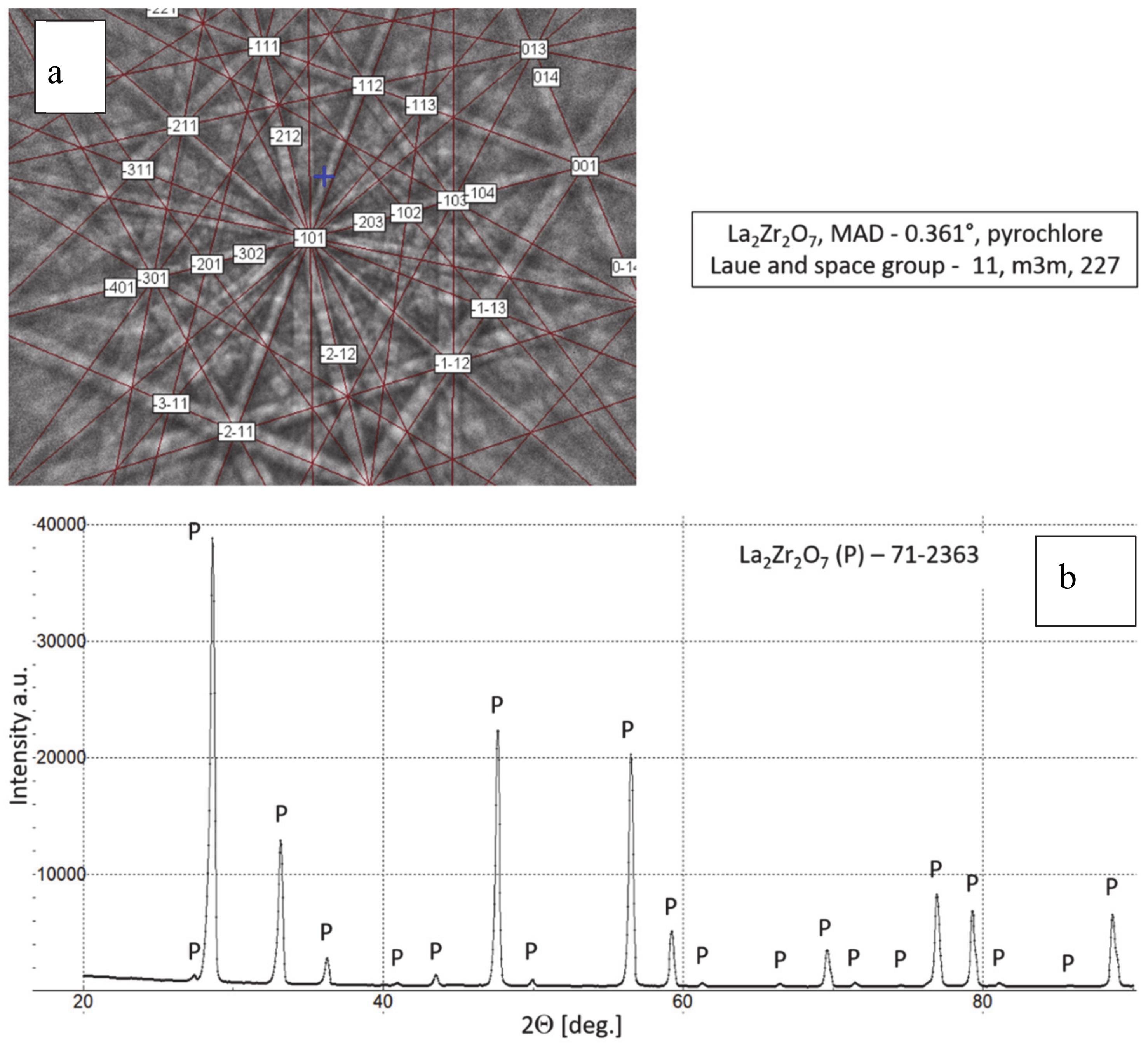
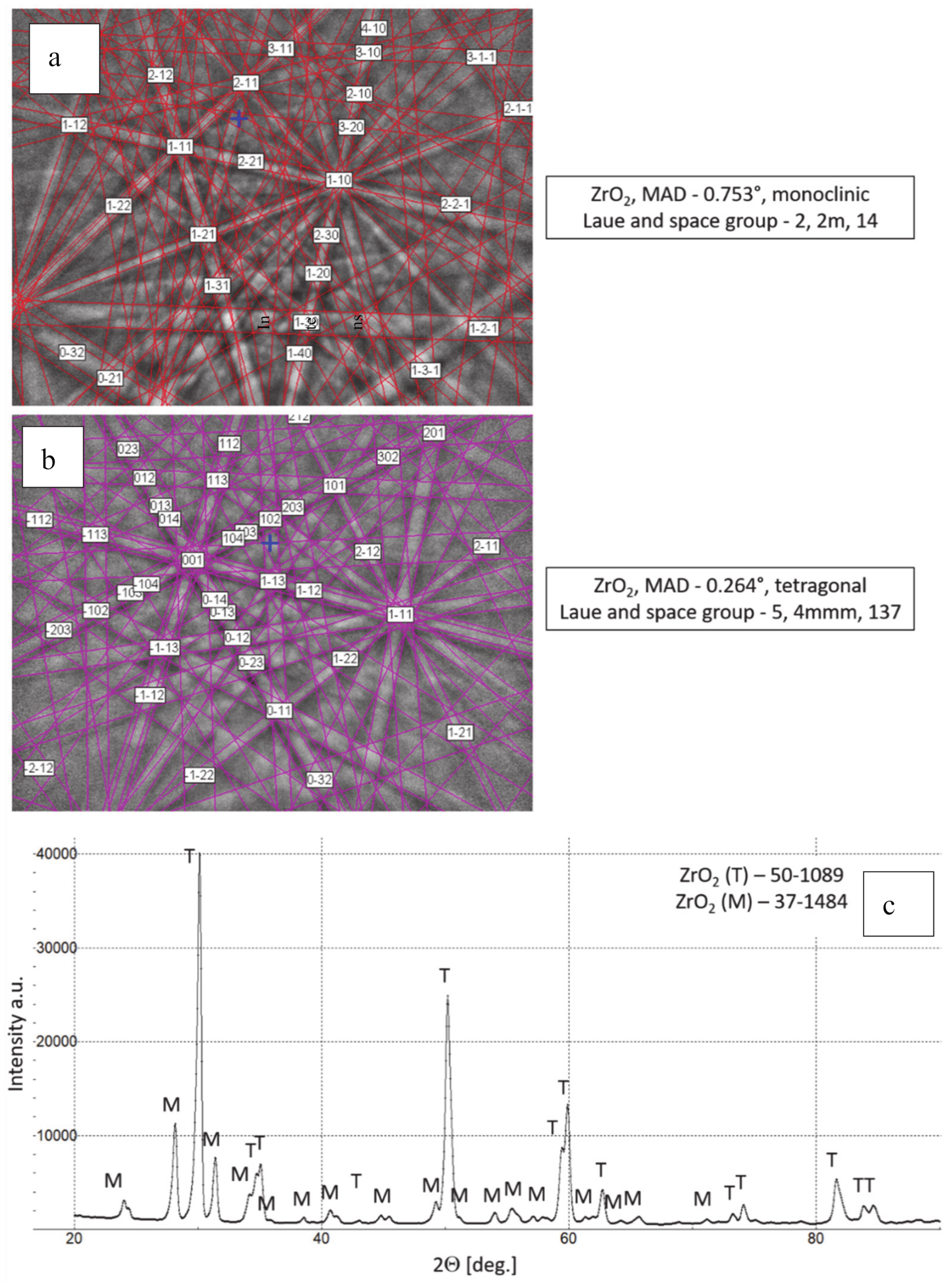

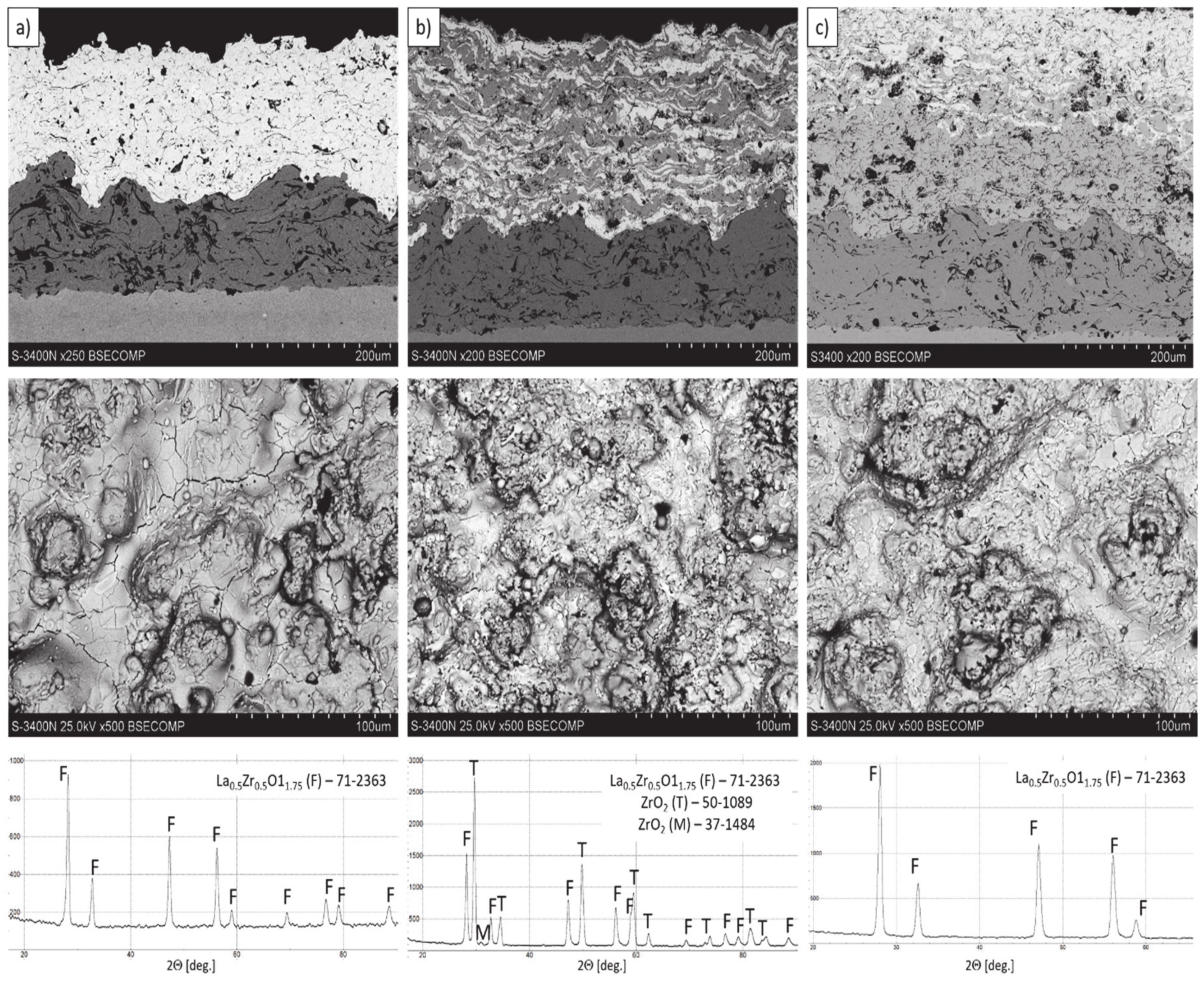


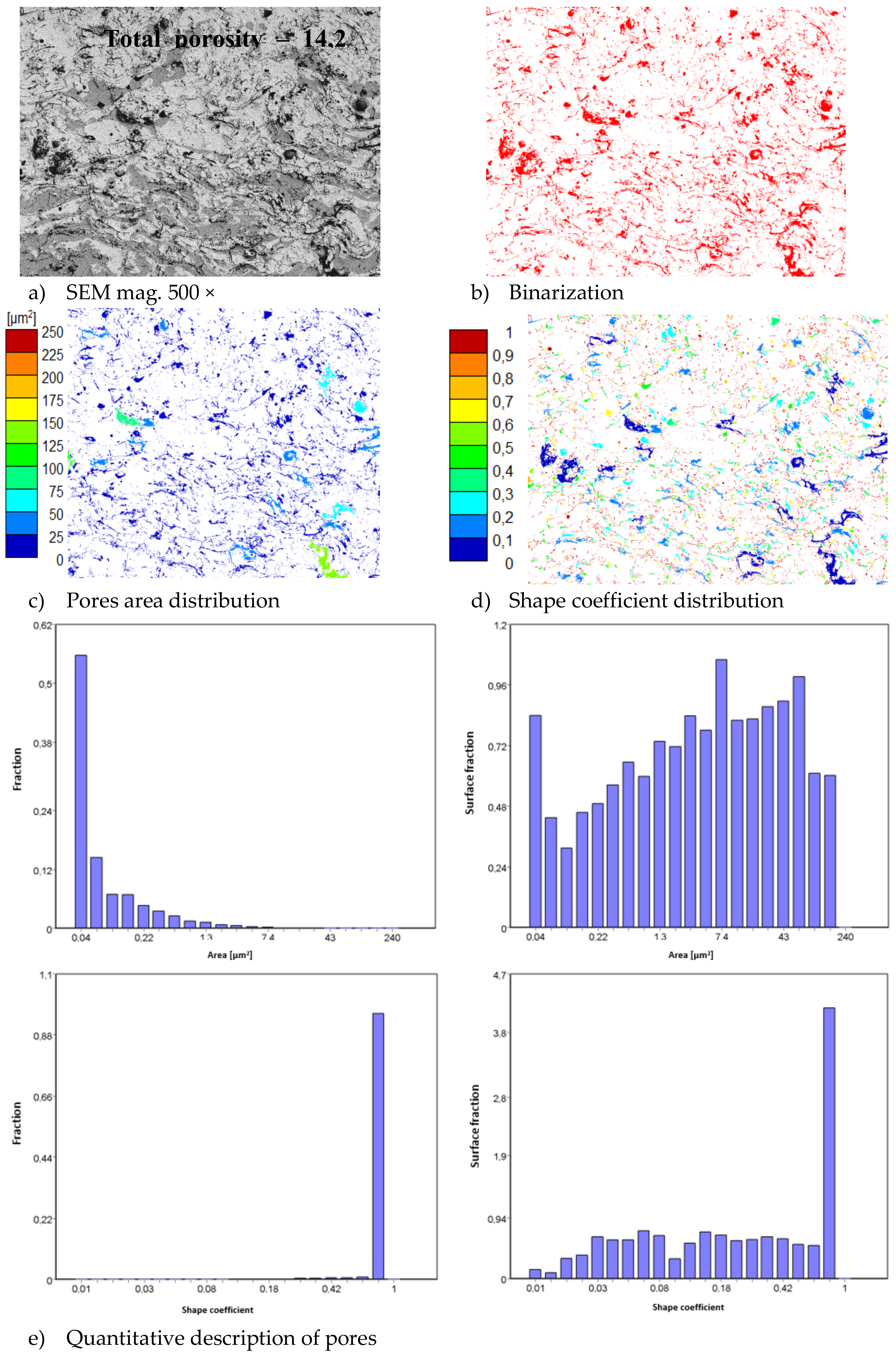

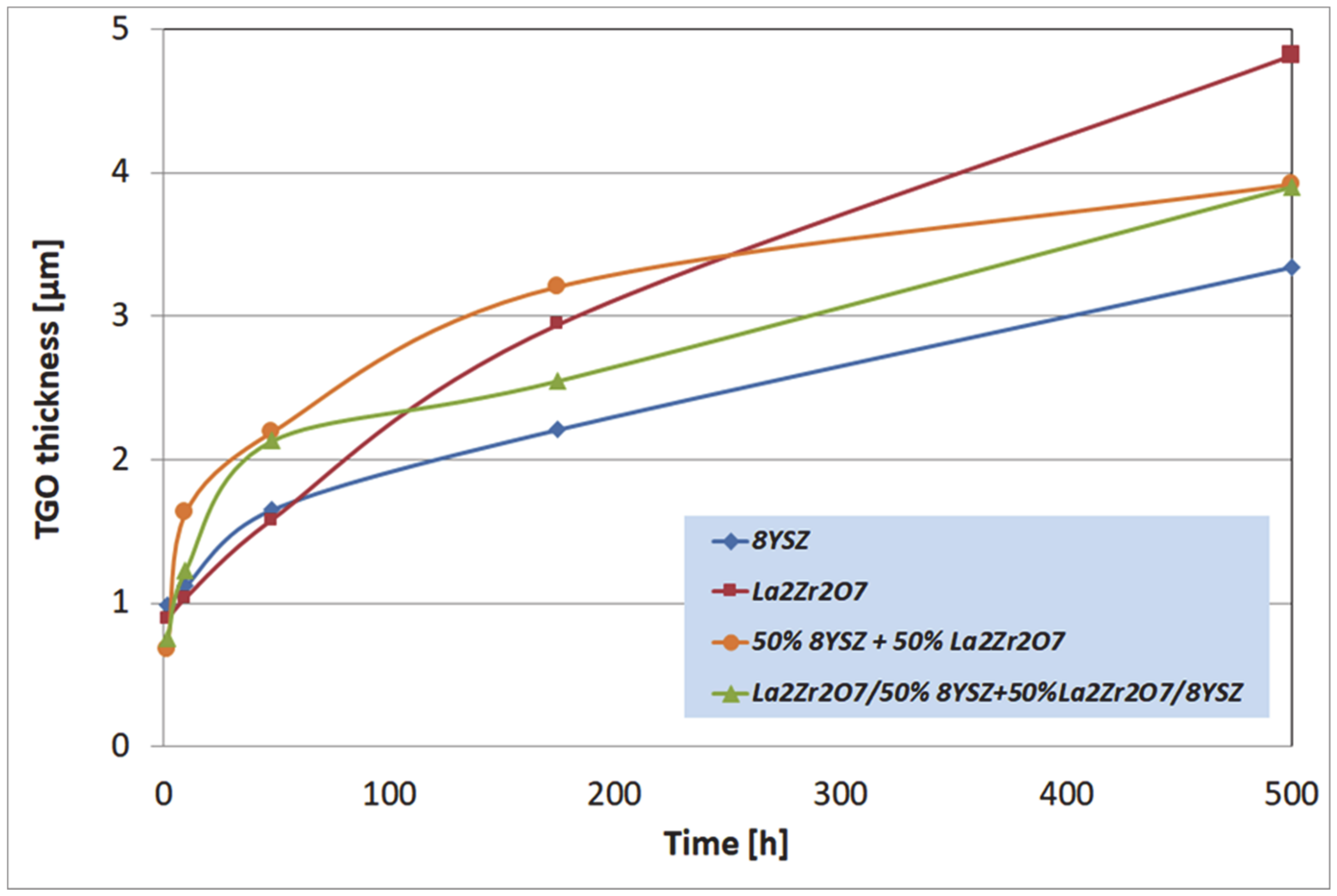

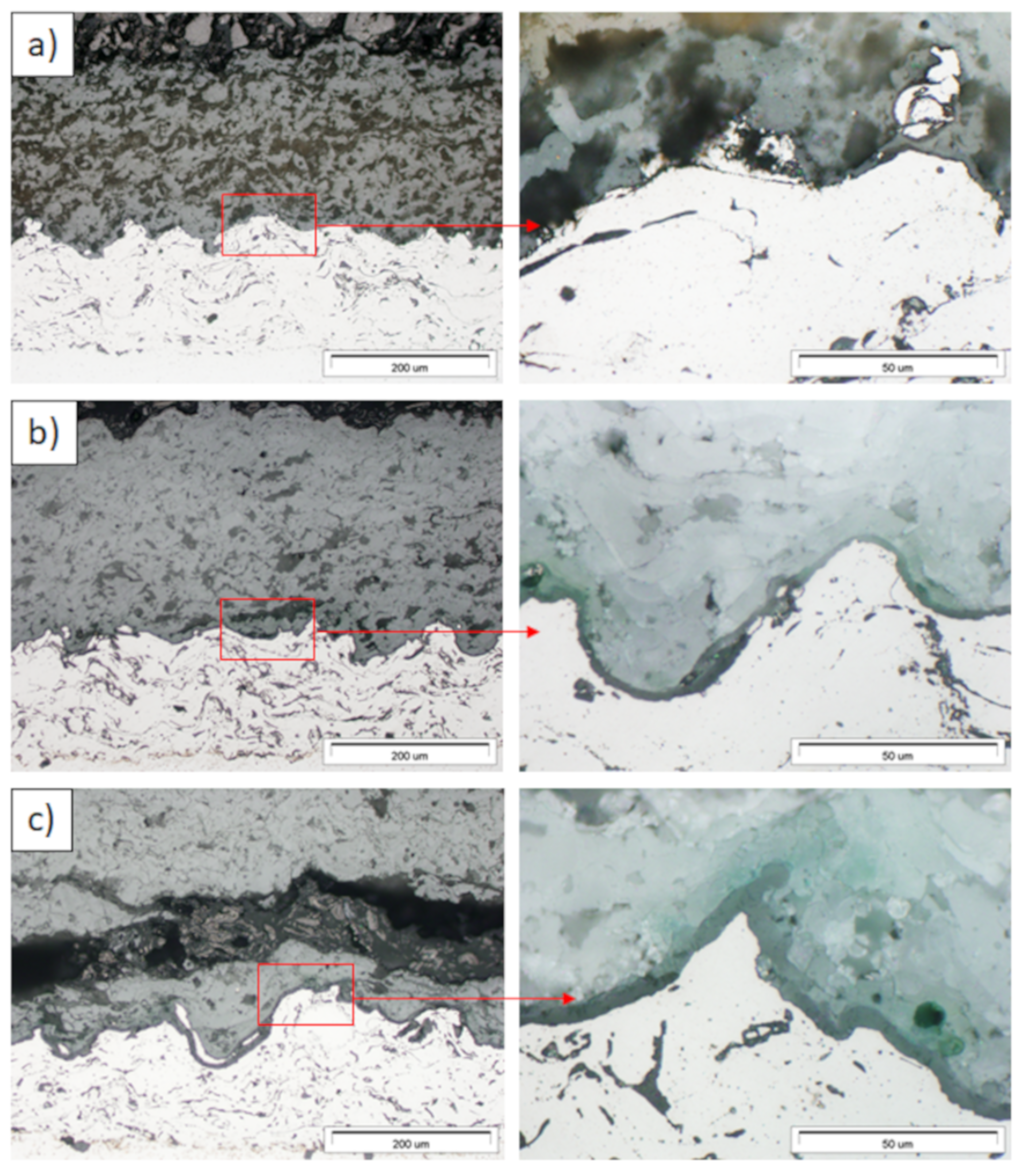
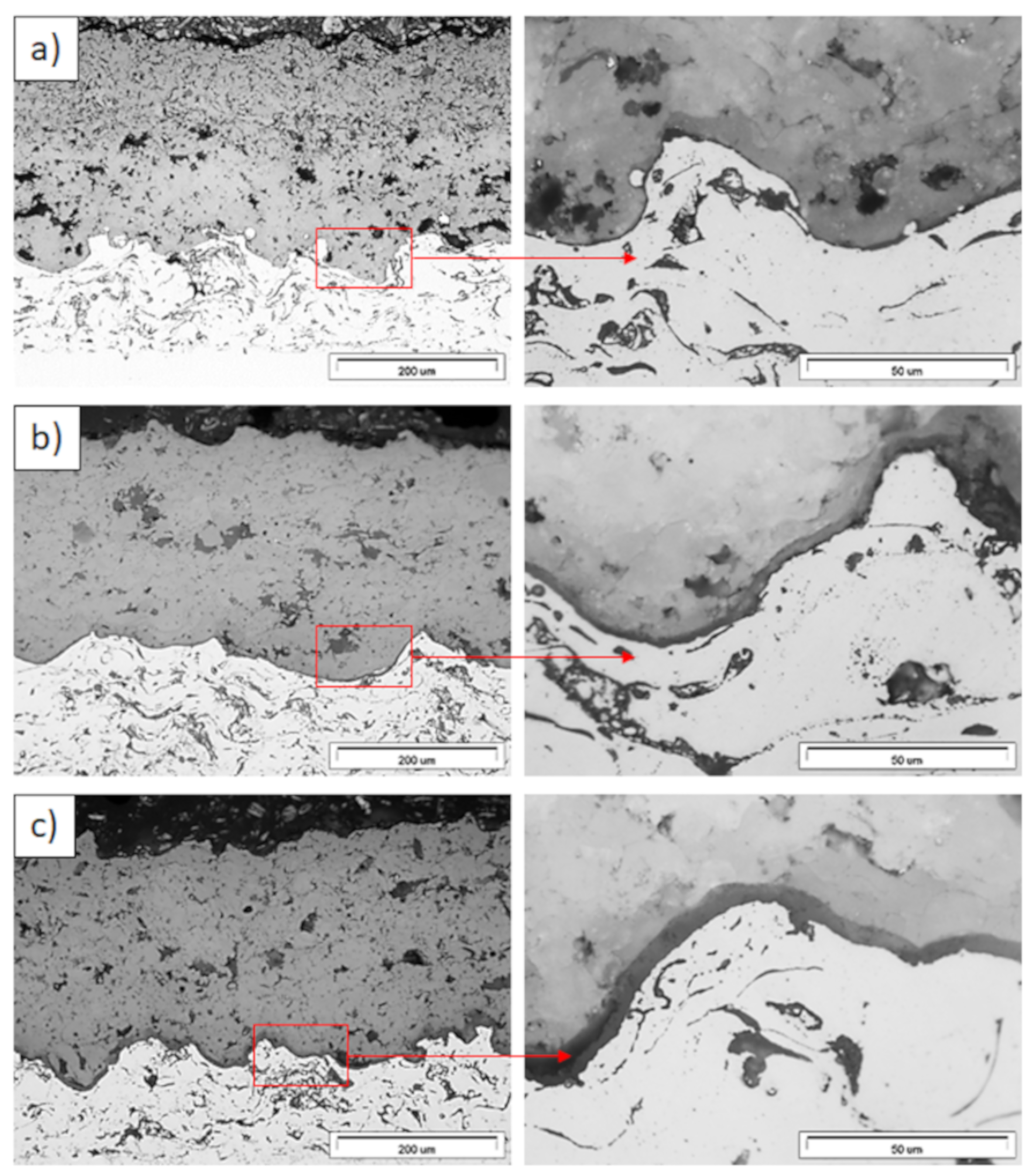

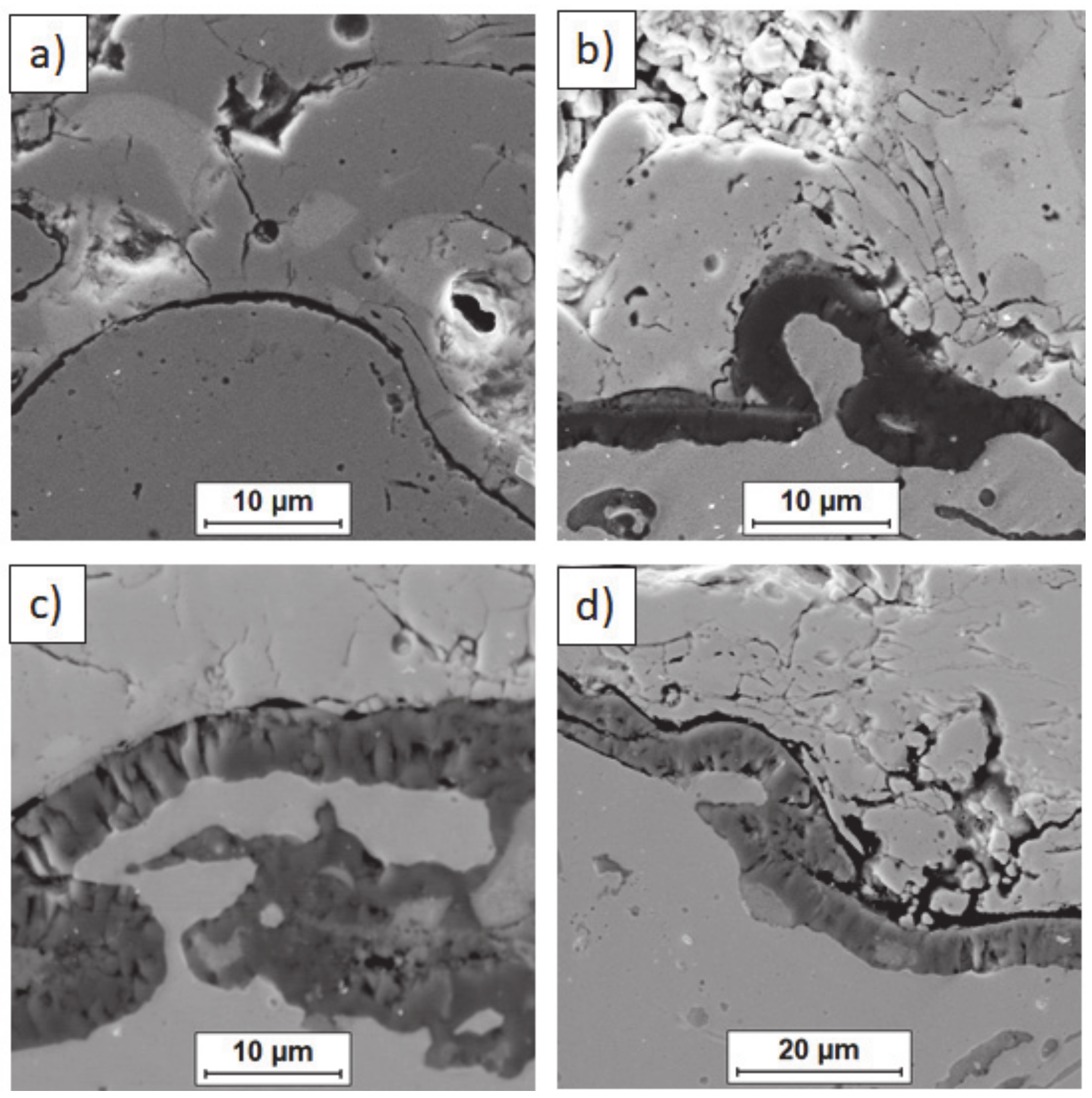
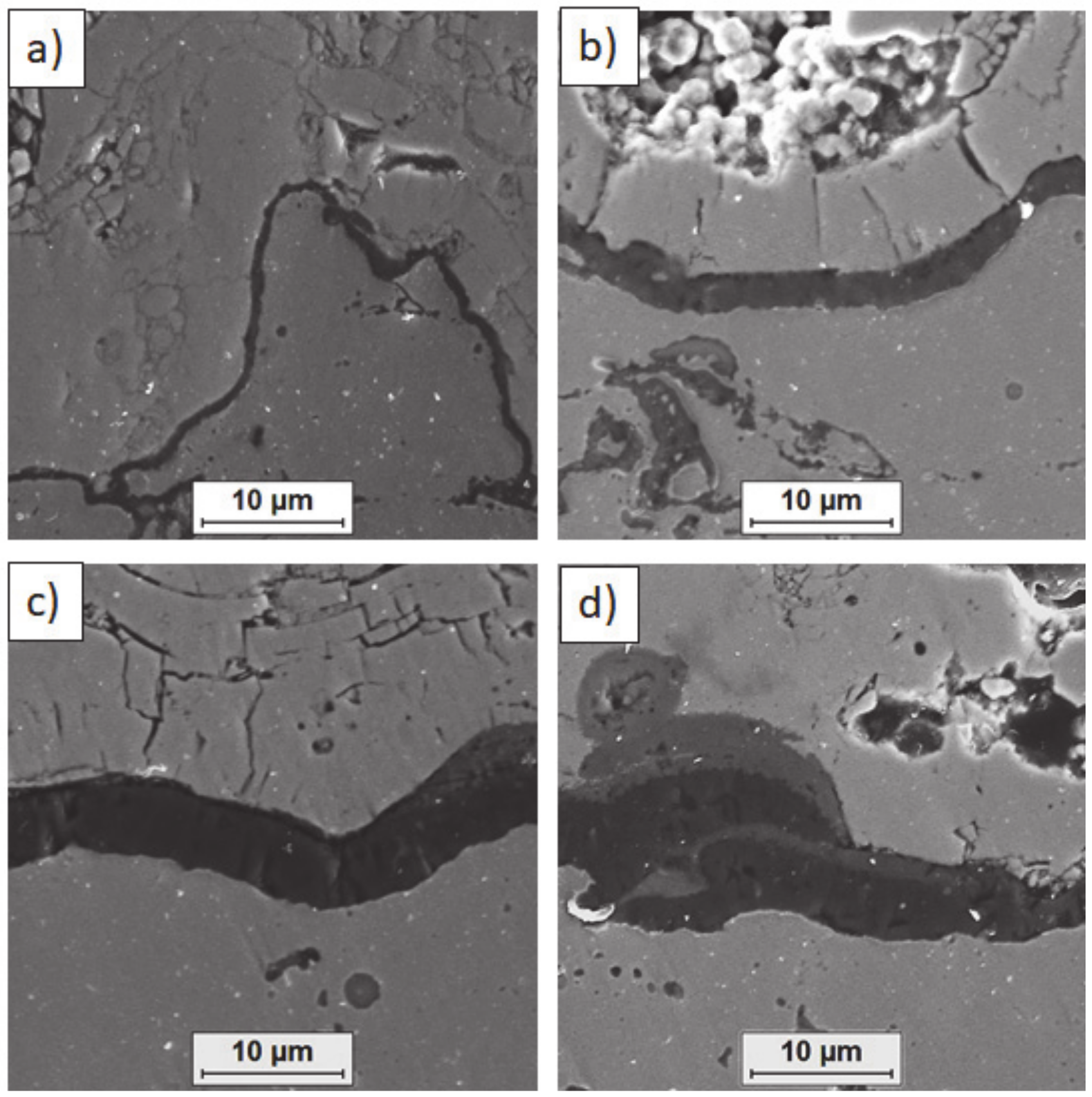


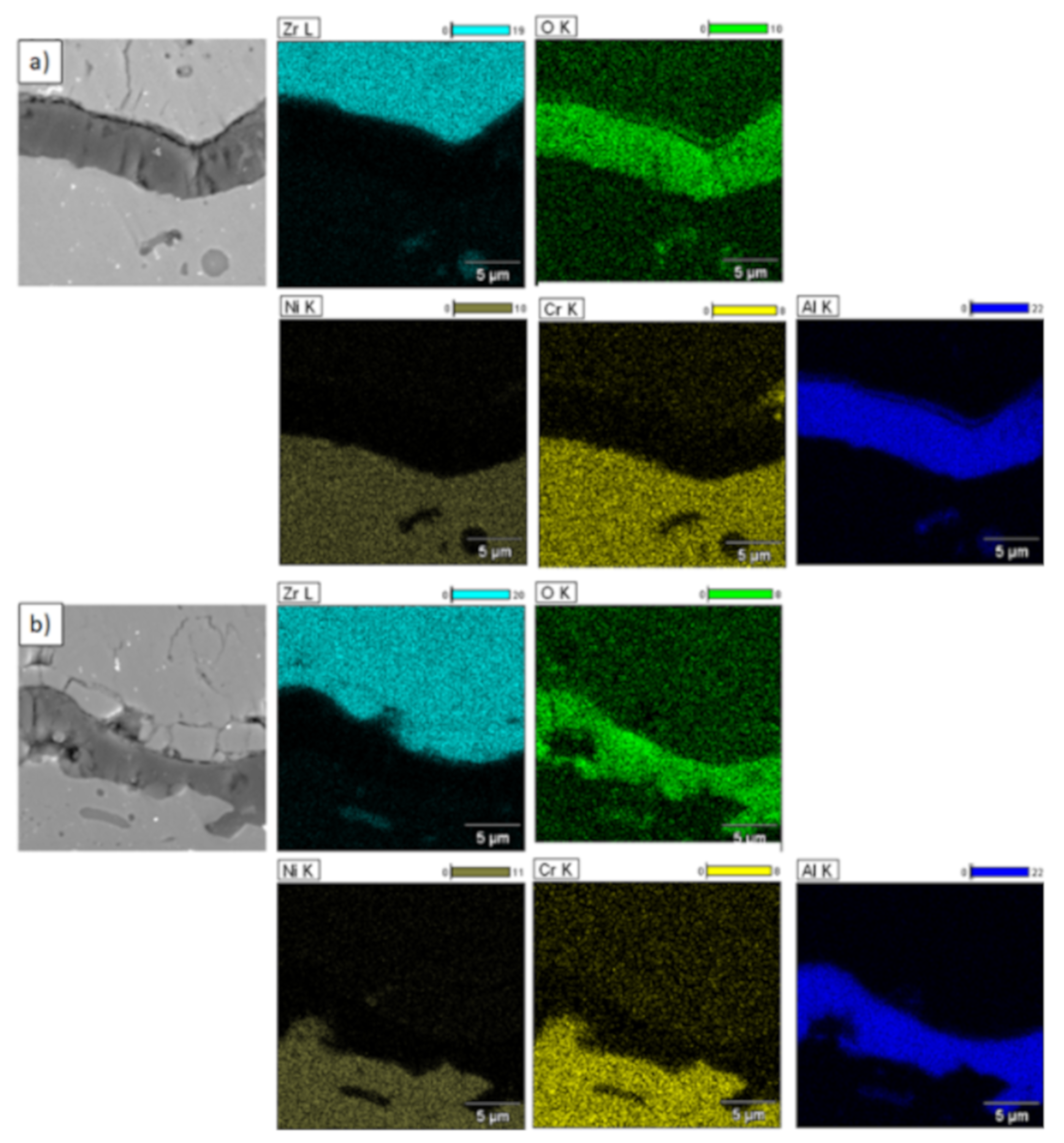

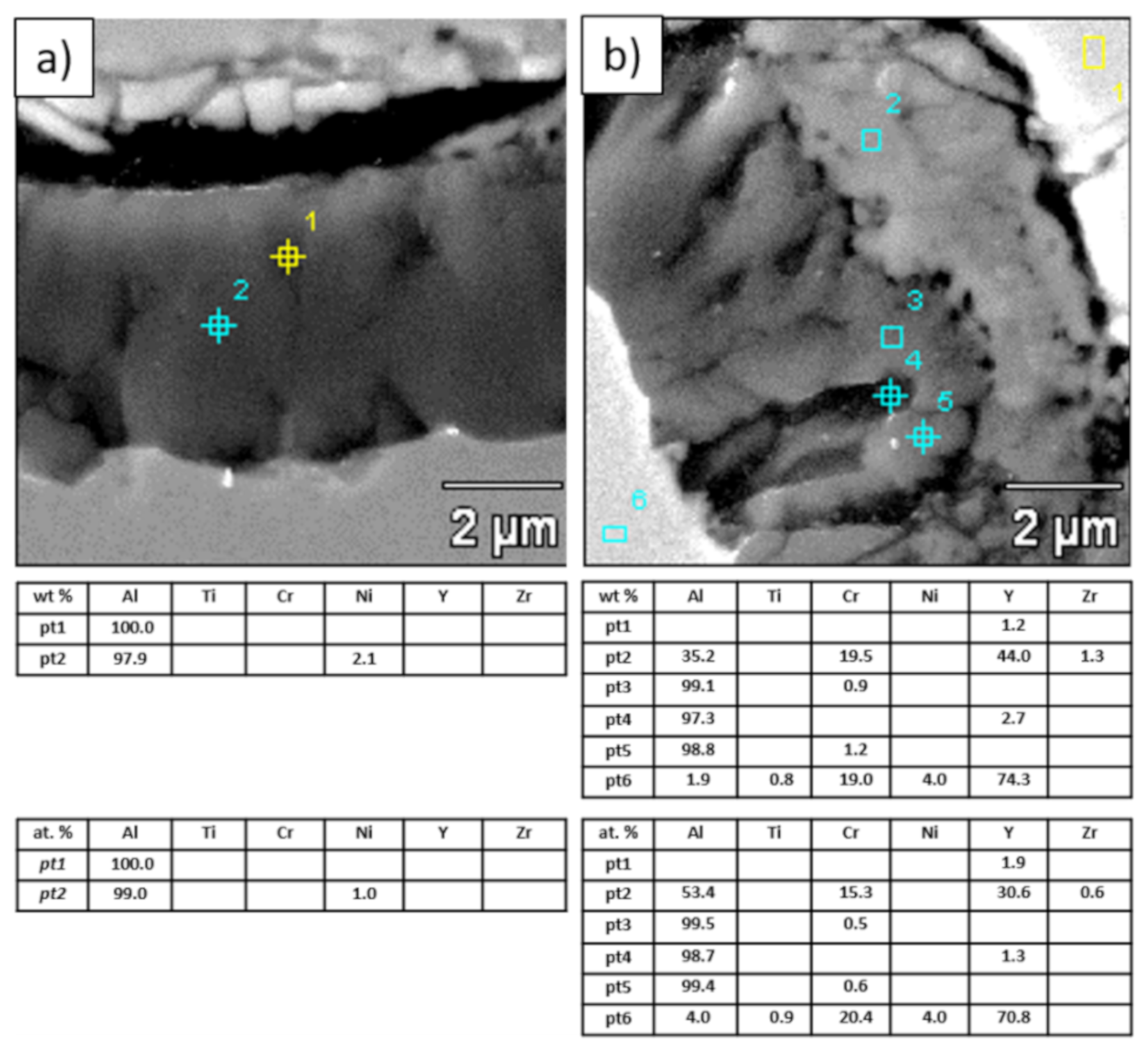
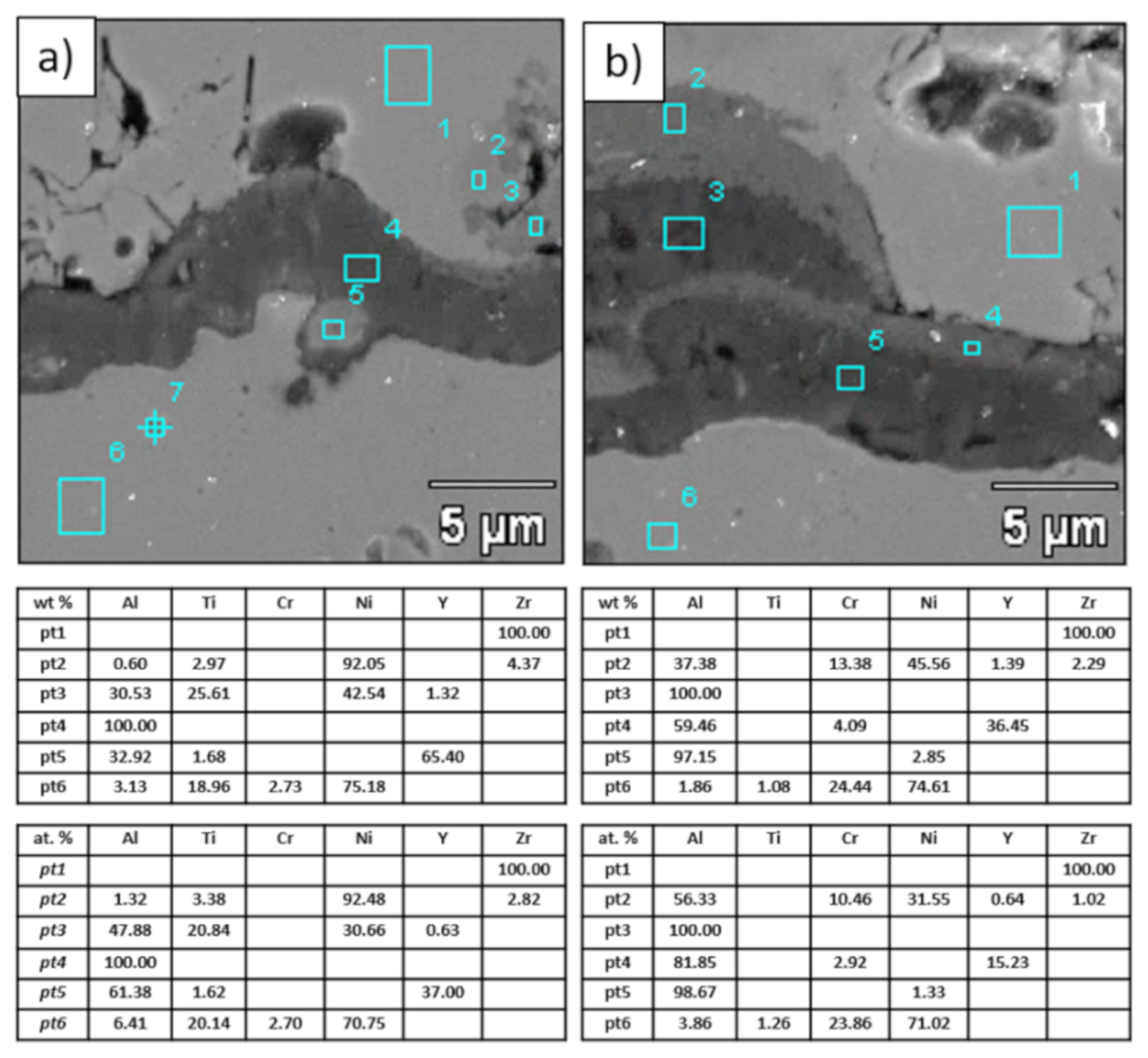



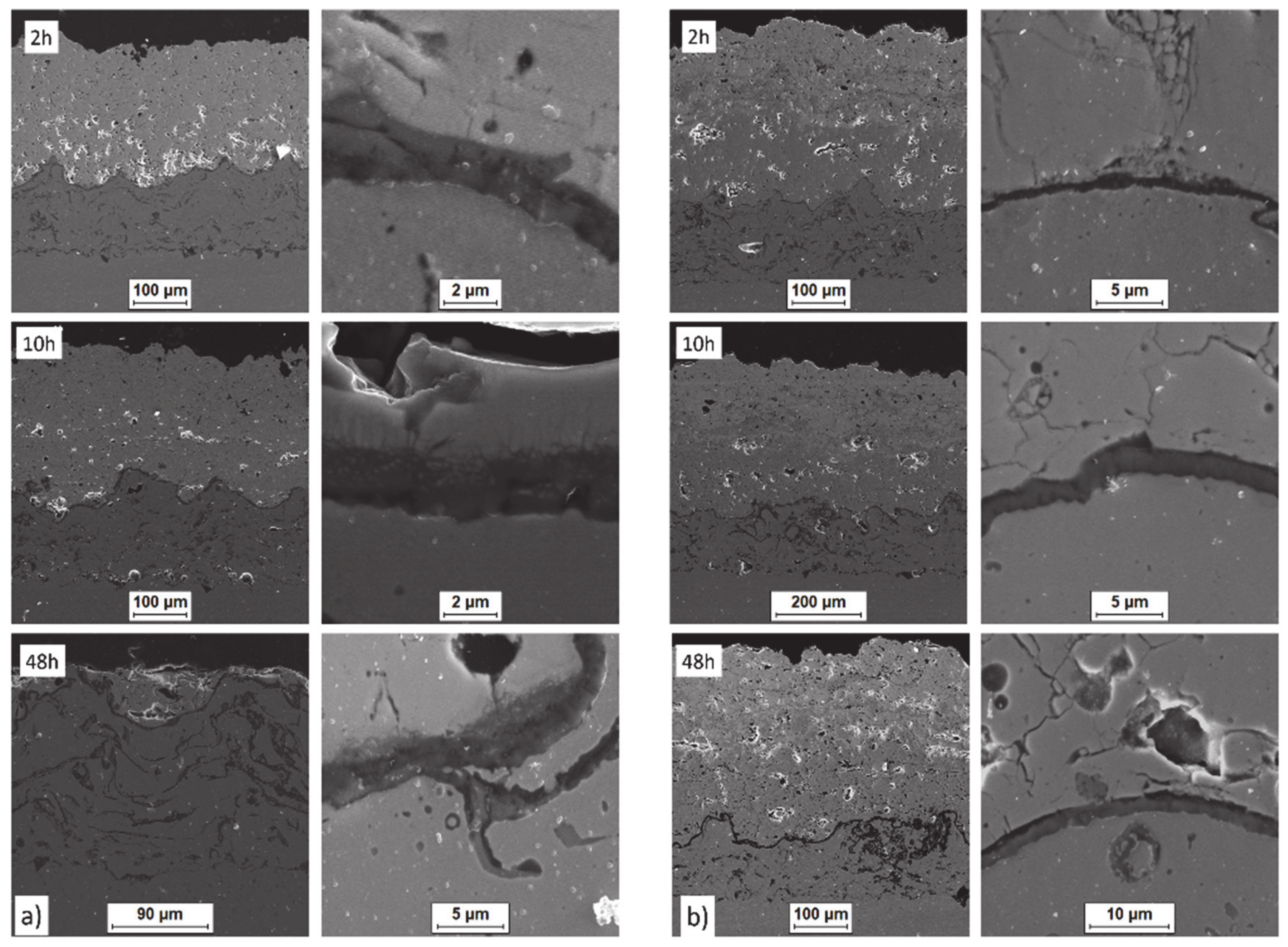

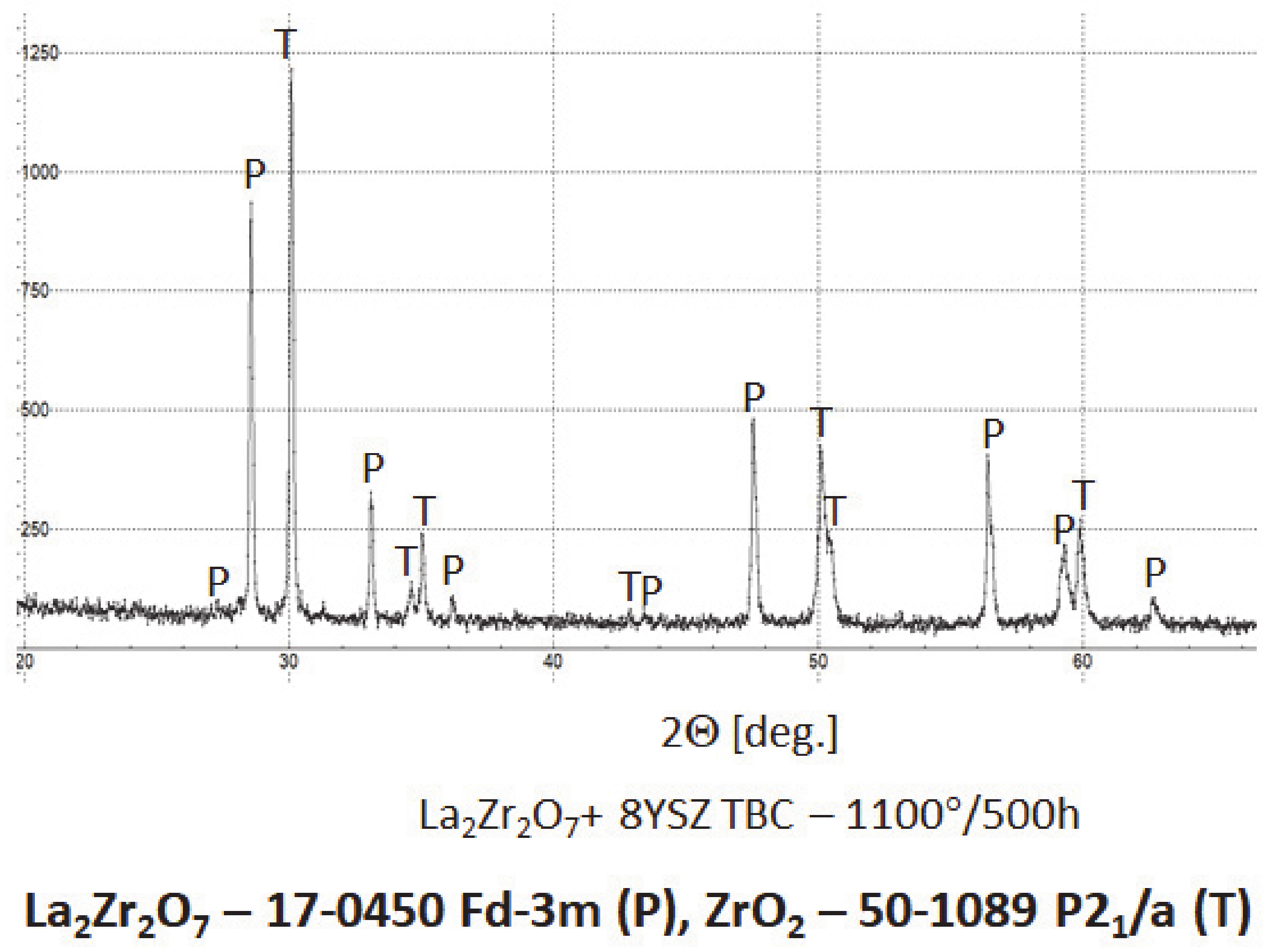



| (wt.%) | 8YSZ | La2Zr2O7 |
|---|---|---|
| Zr | Bal. | Bal. |
| La | - | 59.1 + 0.90 |
| Y | 6.10 + 0.10 | 0.009 + 0.001 |
| Al | 0.17 + 0.008 | 0.092 + 0.001 |
| Si | <0.10 | <0.10 |
| Cu | <0.01 | <0.01 |
| Ti | <0.067 + 0.003 | <0.011 + 0.003 |
| S | 0.004 + 0.0004 | 0.001 + 0.0002 |
| C | 0.018 + 0.002 | 0.002 + 0.002 |
| O | 12.9 + 0.08 | 10.1 + 0.08 |
| N | 101 ppm + 10 | 434 ppm + 10 |
| Technological Parameters | 8YSZ | La2Zr2O7 |
|---|---|---|
| Density (g/cm3) | 5.89 ± 0.12 | 5.78 ± 0.17 |
| Bulk density by funnel method (g/cm3) | 2.06 ± 0.03 | 1.23 ± 0.02 |
| Bulk density by Scott method (g/cm3) | 2.12 ± 0.04 | 1.30 ± 0.02 |
| Flowability (s/50 g) | 45 ± 2 | 49 ± 2 |
| Parameters | Powder Composition | |||
|---|---|---|---|---|
| 8YSZ | La2Zr2O7 | La2Zr2O7/8YSZ | La2Zr2O7 + 8YSZ | |
| Type of plasma gun | F4MB | F4MB | F4MB | F4MB |
| Argon (L/min) | 40 | 40 | 40 | 40 |
| Hydrogen (L/min) | 10 | 10 | 10 | 10 |
| Current (A) | 600 | 600 | 600 | 600 |
| Arc voltage (V) | 59.3–60.3 | 61.6–62.3 | 60.6–62.1 | 60.9–62.8 |
| Torchpower (W) | 36.5–35.9 | 37.2–38.1 | 37.3–38.2 | 37.7–38.9 |
| Feed (mm/s) | 10 | 10 | 10 | 10 |
| Distance (mm) | 100 | 100 | 100 | 100 |
| Number of cycles | 20 | 20 | 30 | 30 |
© 2020 by the authors. Licensee MDPI, Basel, Switzerland. This article is an open access article distributed under the terms and conditions of the Creative Commons Attribution (CC BY) license (http://creativecommons.org/licenses/by/4.0/).
Share and Cite
Jasik, A.; Moskal, G.; Mikuśkiewicz, M.; Tomaszewska, A.; Jucha, S.; Migas, D.; Myalska, H. Oxidation Behavior of the Monolayered La2Zr2O7, Composite La2Zr2O7 + 8YSZ, and Double-Ceramic Layered La2Zr2O7/La2Zr2O7 + 8YSZ/8YSZ Thermal Barrier Coatings. Materials 2020, 13, 3242. https://doi.org/10.3390/ma13143242
Jasik A, Moskal G, Mikuśkiewicz M, Tomaszewska A, Jucha S, Migas D, Myalska H. Oxidation Behavior of the Monolayered La2Zr2O7, Composite La2Zr2O7 + 8YSZ, and Double-Ceramic Layered La2Zr2O7/La2Zr2O7 + 8YSZ/8YSZ Thermal Barrier Coatings. Materials. 2020; 13(14):3242. https://doi.org/10.3390/ma13143242
Chicago/Turabian StyleJasik, Anna, Grzegorz Moskal, Marta Mikuśkiewicz, Agnieszka Tomaszewska, Sebastian Jucha, Damian Migas, and Hanna Myalska. 2020. "Oxidation Behavior of the Monolayered La2Zr2O7, Composite La2Zr2O7 + 8YSZ, and Double-Ceramic Layered La2Zr2O7/La2Zr2O7 + 8YSZ/8YSZ Thermal Barrier Coatings" Materials 13, no. 14: 3242. https://doi.org/10.3390/ma13143242
APA StyleJasik, A., Moskal, G., Mikuśkiewicz, M., Tomaszewska, A., Jucha, S., Migas, D., & Myalska, H. (2020). Oxidation Behavior of the Monolayered La2Zr2O7, Composite La2Zr2O7 + 8YSZ, and Double-Ceramic Layered La2Zr2O7/La2Zr2O7 + 8YSZ/8YSZ Thermal Barrier Coatings. Materials, 13(14), 3242. https://doi.org/10.3390/ma13143242





